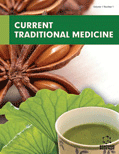Abstract
Kidney stone formation or Urolithiasis is a common problem that has remained for many centuries with no guarantee of effective treatment and a high recurrence rate. Urolithiasis is the precipitation of insoluble and less soluble salts, such as Oxalate and Phosphate, in the urinary tract, causing obstruction in the urethra resulting in renal colic and hematuria.
Approximately 10-12% of the population in industrialized countries is severely affected by urinary stones. In only a few geographical areas, stone diseases are rare, e.g., in the coastal areas of Japan and Germany. It is believed that 11% of people in India are suffering from urinary stone problems, and approximately 50% of these cases may lead to severe renal damage. Ultimately it causes severe health issues in terms of urinary tract obstruction, severe pain, and infection that adversely affect the health of individuals. Diuretics and narcotic analgesics like drugs that are used to prevent and cure urolithiasis are not effective in all cases and are costly, have common recurrences, risk of long term fertility and other potential side effects are observed. Therefore, humans are forced to return to nature for safe remedies using herbal treatments. A great number of Indian medicinal plants have been investigated in the treatment of urolithiasis, and they have been reported to be safe and effective. In the present review, an effort has been made to highlight such herbal medicines that are potentially effective in the management of urolithiasis.Keywords: Calcium oxalate, kidney, medicinal plants, management, urinary stones, urolithiasis.
Graphical Abstract
Current Traditional Medicine
Title:Benefaction of Herbals in the Management of Urolithiasis
Volume: 7 Issue: 4
Author(s): Ankit Yadav, Rina Das, Dinesh Kumar Mehta* Yatin
Affiliation:
- M.M. College of Pharmacy, Maharishi Markandeshwar (Deemed to be University), Mullana, Ambala, Haryana- 133207,India
Keywords: Calcium oxalate, kidney, medicinal plants, management, urinary stones, urolithiasis.
Abstract: Kidney stone formation or Urolithiasis is a common problem that has remained for many centuries with no guarantee of effective treatment and a high recurrence rate. Urolithiasis is the precipitation of insoluble and less soluble salts, such as Oxalate and Phosphate, in the urinary tract, causing obstruction in the urethra resulting in renal colic and hematuria.
Approximately 10-12% of the population in industrialized countries is severely affected by urinary stones. In only a few geographical areas, stone diseases are rare, e.g., in the coastal areas of Japan and Germany. It is believed that 11% of people in India are suffering from urinary stone problems, and approximately 50% of these cases may lead to severe renal damage. Ultimately it causes severe health issues in terms of urinary tract obstruction, severe pain, and infection that adversely affect the health of individuals. Diuretics and narcotic analgesics like drugs that are used to prevent and cure urolithiasis are not effective in all cases and are costly, have common recurrences, risk of long term fertility and other potential side effects are observed. Therefore, humans are forced to return to nature for safe remedies using herbal treatments. A great number of Indian medicinal plants have been investigated in the treatment of urolithiasis, and they have been reported to be safe and effective. In the present review, an effort has been made to highlight such herbal medicines that are potentially effective in the management of urolithiasis.Export Options
About this article
Cite this article as:
Yadav Ankit , Das Rina , Mehta Kumar Dinesh *, Yatin , Benefaction of Herbals in the Management of Urolithiasis, Current Traditional Medicine 2021; 7 (4) . https://dx.doi.org/10.2174/2215083806999201125122055
| DOI https://dx.doi.org/10.2174/2215083806999201125122055 |
Print ISSN 2215-0838 |
| Publisher Name Bentham Science Publisher |
Online ISSN 2215-0846 |
 10
10
- Author Guidelines
- Bentham Author Support Services (BASS)
- Graphical Abstracts
- Fabricating and Stating False Information
- Research Misconduct
- Post Publication Discussions and Corrections
- Publishing Ethics and Rectitude
- Increase Visibility of Your Article
- Archiving Policies
- Peer Review Workflow
- Order Your Article Before Print
- Promote Your Article
- Manuscript Transfer Facility
- Editorial Policies
- Allegations from Whistleblowers
- Announcements
Related Articles
-
Mass Spectrometry for Studying the Interaction between Small Molecules and Proteins
Current Proteomics The Role of Microbiota and Intestinal Permeability in the Pathophysiology of Autoimmune and Neuroimmune Processes with an Emphasis on Inflammatory Bowel Disease Type 1 Diabetes and Chronic Fatigue Syndrome
Current Pharmaceutical Design Independent Relationship of Osteocalcin Circulating Levels with Obesity, Type 2 Diabetes, Hypertension, and HDL Cholesterol
Endocrine, Metabolic & Immune Disorders - Drug Targets Inflammatory Process in Alzheimer’s and Parkinson's Diseases: Central Role of Cytokines
Current Pharmaceutical Design Antioxidant Components of Brassica Vegetables Including Turnip and the Influence of Processing and Storage on their Anti-oxidative Properties
Current Medicinal Chemistry Targeting Exocytosis: Ins and Outs of the Modulation of Quantal Dopamine Release
CNS & Neurological Disorders - Drug Targets Virtual Screening Strategy Combined Bayesian Classification Model, Molecular Docking for Acetyl-CoA Carboxylases Inhibitors
Current Computer-Aided Drug Design The Atherogenic Dyslipidemia of Metabolic Syndrome- Are there New Effective Therapeutic Options Beyond Statins?
Current Drug Therapy Evaluation of hs-CRP and sLOX-1 Levels in Moderate-to-High Risk Acute Coronary Syndromes
Endocrine, Metabolic & Immune Disorders - Drug Targets Inhibition of Protein Misfolding and Aggregation by Small Rationally-Designed Peptides
Current Pharmaceutical Design Lifestyle Modification for Masked Hypertension
Current Hypertension Reviews MicroRNAs Contribute to Hepatocellular Carcinoma
Mini-Reviews in Medicinal Chemistry Astrocytic Expression of the Immunoreceptor CD300f Protects Hippocampal Neurons from Amyloid-β Oligomer Toxicity In Vitro
Current Alzheimer Research Epigenetic Multiple Modulators
Current Topics in Medicinal Chemistry Synthesis, Antifungal Activity and Carbonic Anhydrase Inhibitory Properties of Cu (II) Bis (3, 4 Dimethoxybenzoate) Bis (Nicotinamide) Dihydrate
Current Enzyme Inhibition Morphological Characterization of Lipid Structured Nanoparticles by Atomic Force Microscopy while Minimizing the Formation of Failed Artefacts
Current Nanomaterials PPARγ Agonistic Activity of Sulphonylureas
Endocrine, Metabolic & Immune Disorders - Drug Targets Sperm Quality in Mouse After Exposure to Low Doses of TCDD
Current Topics in Medicinal Chemistry Apoptosis in Atherosclerosis: Virtue or Vice
Current Cardiology Reviews Current Status and Perspectives Regarding the Treatment of Osteosarcoma: Chemotherapy
Reviews on Recent Clinical Trials



























